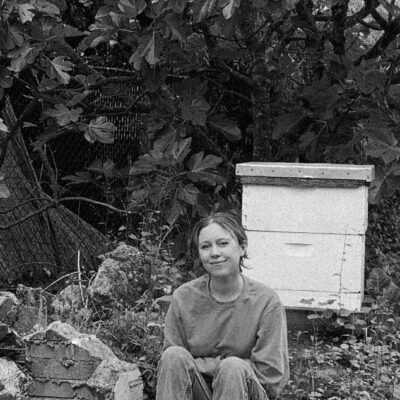from Prologue: Wastewater Treatment Facilities as Socrates Tartarus
In Socrates’ Phaedo, underground waterways appear more physiological than hydrological. Socrates describes the motion of air and water as breath in a continuous stream in Tartarus, which causes terrible and monstrous winds as it passes in and out; and when in turn it ebbs from there and rushes back this way, it fills our streams again, and when they are filled they flow through their channels and through the earth; and arriving in regions to which their ways have been severally prepared, they make seas and lakes and rivers and springs. Some rivers, he states, flow in a complete circle, like a snake, they descend to the deepest parts before discharging their waters. I do not know if I believe in the immortality of the soul; but I do believe in emotional memory, subterranean, beneath logic, translated by the collective into our metaphors and myths. How often is the imagination used to cope with big loss? If it is a flood, then it’s fertile. Loss can spawn results, fictive or real possibilities, parallel worlds to contend with the unknowables.
As Judith Butler writes, how can responsibility be thought on the basis of this socially ecstatic structure of the body? As something that, by definition, yields to social crafting and force, the body is vulnerable.
The body is on an operating table. The body is in bed beside the mattress dent. Or the body isn’t here, but an imprint of its absence. The river drains back into its channel and leaves its mark of a rise in the floodplain. Something is lost in a reconsolidation of memory, the edges curl, burning. The chemical tailings. The floodplain is or isn’t reconstructed. The memory flows around new contours. Ashes mix with sediment. One of the penalties of an ecological education is that one lives alone in a world of wounds, says Aldo Leopold. I believe, the penalty is not to live alone in a world of wounds–– instead, it is to live with the seemingly impossible task of determining relation in a world of wounds.
There is a balance to remaining permeable and responsive to instances that are not our own and treating them as our own. Just as in a septic tank, the systematic cataloging and subsequent separation of subjects is known as primary treatment. Next, as in a septic tank drain field, the breakdown of components through the media reports–– so we may remember to forget–– is secondary treatment.
In an undated passage sometime in July, I wrote, The effects of the drought are very clear–– a lot of plants along the cliffside appear brittle and blackened with thirst. Or, is it true that if someone is ignored long enough they can believe they don’t exist?
Water, water everywhere, / and not a drop to drink.
from AN ATTEMPT AT CONTACT
FISHERMAN
Look, I don’t have much to offer.
Long pause.
But you could do like me––
Keep baiting. Keep waiting…
yeah, that’s one way.
Pause.
Or you could go
down,
and through…
GUTTERSLUT
Are you saying––
Snake emerges from a slit in the Flesh.
SNAKE
To travel in subterranean
water
rife with contaminants,
in the leaky
conveyance of slump skins,
the slow,
sepulchral creep
oiled slick, and on fire,
while half-asleep.
from MUCKMUCK AND LEAK HELLOS
AFTERGLOW
1. The Ensemble of the Afterglow dance in pairs.
2. Lead collapses, deceased.
3. Follow crouches and shakes lead.
4. Switch partners. Repeat step 3.
5. Lead rises.
6. Repeat steps 1-5. Replace follow shaking the shoulders of the lead with––
I. Mouth-to-mouth resuscitation.
II. Head laying in the partner’s lap.
III. One pair of hands on both faces.
IV. Create a human checkout stand, and pass through one-by-one.
Sound of a heart monitor. Siren lights.
No sound of a siren.
AFTERGLOW
Yell all together. Stomp feet.
Yes!
1. Hold flashlights, search for the body around flesh and through the audience, under chairs.
2. Rejoin on stage. Hold light under faces. Enact a silent scream. All crumble to the floor.
3. Yell, “Yes!” with varying intonations, and turn flashlights off.

ABOUT THE AUTHOR
Jordan Chesnut is a recent graduate from the University of Montana MFA in Creative Writing, former panelist in the Thinking Its Presence conference at the Poetry Center in Tuscon, Arizona, and participant in the Montana Repertory Theatre’s Colony 22. Forthcoming publications include a performance score and statement on trans-poetics in the Jacket2 “Extreme Texts” Feature curated by Divya Victor, and a sound collage in the summer issue of Soft Surface.
ABOUT THE MANUSCRIPT
In 2015, the body of my former partner was found in the wastewater treatment facility of our college town. I wrote this play-in-verse in an attempt to uncover the reason or path of his departure; at the very least, I thought I could find closure by wishfully stitching an assemblage from the strange, synchronous scraps of the personal myth he left in his wake. The polyphony of voices throughout instead inquire–– how do we live precariously intertwined and determine relations in “a world of wounds”? Amidst mass extinctions, wars against marginalized identities, and unstoppable pop hits like “Thank U, Next,” I wonder how to contend with my own uniquely felt, individual loss.
Through the protagonist, Gutterslut, this play-in-verse follows a journey along the “rivers of flesh and rivers of sewage” through the “post-collapse body” of grief. Here, memories are animate tattoos (flash sheet included), a chorus of crumbling statues consult and console, and a talk show host interviews our moody antagonist. The result is a psycho-drama that interrogates subjectivity, grief and its embodiments, discourse around dispossessed persons, responsibility within and outside of romantic love, and the efficacy of language itself. In doing so, I hope to subvert the notion of unity or the cathartic return and explore other ways of communing with each other and our dead.